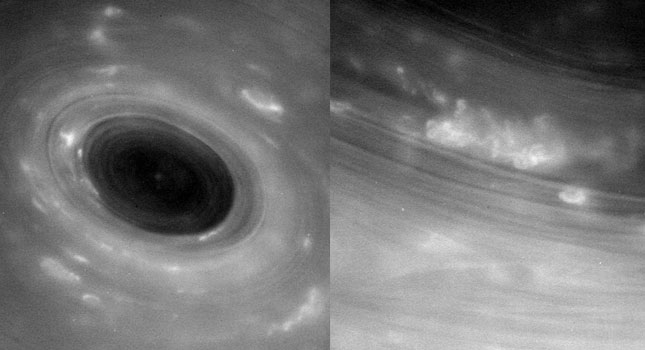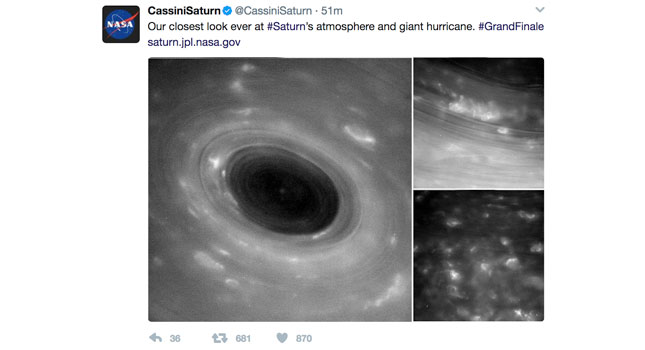
Cassini’s first pass through the rings of Saturn took place at 10am GMT yesterday (2 am PDT/5 am EDT on the 26th April 2017), but it took more than 20 hours to connect back to NASA’s Deep Space Network (DSN) Goldstone Complex in California’s Mojave Desert. While the gap was expected to be mostly free of debris, NASA had programmed Cassini to fly through the gap between Saturn’s rings with its antenna cone in the front position to protect it from anything that might damage it. As a result it had to complete the entire first pass and orbit without radio signal back to Earth.
After it’s flight through the gap between the rings of Saturn yesterday it went on to dive closer to the planet to get to within around 1,900 miles (3,000 kilometers) of its cloud tops before circling back and re-position its antenna to connect back up to the DSN this morning. The images that have been sent back have been accompanied by a large amount of data collected by Cassini and NASA will be analysing it to help us understand mere about the gas giant.
Once radio contact was returned, Cassini Project Manager Earl Maize of NASA’s Jet Propulsion Laboratory in Pasadena, California announced that he was “delighted to report that Cassini shot through the gap just as we planned and has come out the other side in excellent shape.” Director of the Planetary Science Division at NASA Headquarters in Washington, Jim Green commented, “In the grandest tradition of exploration, NASA’s Cassini spacecraft has once again blazed a trail, showing us new wonders and demonstrating where our curiosity can take us if we dare.”
It’ll be followed up by 21 more passes through the gap between the planet and its rings, which are made up of ice particles, along with a smaller amount of rock debris and dust. Cassini travels at speeds of up to 77,000 mph (124,000 kph) relative to the planet as it completes its dives through the gap between the rings and planet. Cassini’s 22 dives will take place weekly between April and September while it continues its orbit around Saturn before the mission is brought to an end on the 15th September 2017.
It will have spent a whopping 13 years in orbit around the planet, following its initial 7 year journey there from Earth and the coming months will see it complete the mission’s grand finale with the 22 dives. You can follow more of the action for Cassini on the official Twitter page at twitter.com/CassiniSaturn, and you can see the tweet below:



